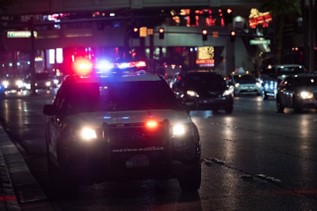
The interaction between citizens and law enforcement officers is a cornerstone of the social contract in any democratic society. Ensuring that these encounters are governed by principles of justice and fairness is essential to safeguarding civil liberties. James Vafeades explains that understanding one’s rights and the responsibilities of law enforcement officers during these interactions can help prevent abuses of power and ensure that citizens’ freedoms are protected.
Historical Context and Legal Framework
The civil rights movement of the 1960s brought significant attention to the disparities in treatment of different demographic groups by law enforcement. Landmark legislation such as the Civil Rights Act of 1964 aimed to eliminate discrimination in various facets of public life, including policing. Subsequent legal decisions, such as Miranda v. Arizona (1966), established critical rights for individuals during police encounters, such as the right to remain silent and the right to an attorney.
The Fourth Amendment to the U.S. Constitution is a key legal foundation in police encounters, protecting citizens against unreasonable searches and seizures. This amendment requires law enforcement to have probable cause or a warrant before conducting searches, though various exceptions exist, such as exigent circumstances or consent given by the individual.
Rights During Police Encounters
Right to Remain Silent: Under the Fifth Amendment, individuals have the right to avoid self-incrimination. This means that during an encounter with police, a person can choose not to answer questions. The invocation of this right must be clear; simply remaining silent is not enough. A clear statement like “I am exercising my right to remain silent” is necessary.
Right to Refuse Consent to Search: Police may request to search your person, vehicle, or home without a warrant. Individuals have the right to refuse consent to these searches. If an officer proceeds without consent or probable cause, the search may be deemed unconstitutional, and any evidence obtained may be inadmissible in court.
Right to an Attorney: During custodial interrogations, the Sixth Amendment guarantees the right to legal representation. If someone cannot afford an attorney, one will be provided. It’s crucial to explicitly request an attorney if taken into custody.
Protection Against Excessive Force: The use of force by police must be proportional to the situation at hand. Excessive force violates the Fourth Amendment and can be grounds for civil rights lawsuits.

Responsibilities of Law Enforcement
Law enforcement officers are bound by the same legal standards that protect citizens’ rights. They must operate within the framework of the Constitution, ensuring that their actions do not infringe upon civil liberties.
Probable Cause and Warrants: Officers need probable cause to make an arrest or conduct a search without a warrant. Probable cause means that there are reasonable grounds to believe a crime has been committed.
Miranda Rights: When taking someone into custody, officers are required to inform them of their rights (the Miranda warning). Failure to do so can render any subsequent statements inadmissible in court.
Documentation and Transparency: Officers are required to document their actions, especially in use-of-force incidents, arrests, and searches. Body cameras and dashboard cameras have become essential tools in promoting transparency and accountability.
De-escalation Training: Many police departments now include de-escalation techniques in their training programs to manage situations without resorting to force, aiming to protect both officers and civilians.
Challenges and Reforms
Despite legal protections, challenges persist in ensuring that all individuals’ civil rights are respected during police encounters. High-profile incidents of police brutality and racial profiling have underscored the need for continued reform and oversight.
Racial Profiling: Disproportionate targeting of minority communities by law enforcement remains a significant issue. Policies aimed at eliminating racial profiling, such as bias training and improved data collection on police stops, are crucial.
Use of Force Policies: Reforming use-of-force policies to emphasize de-escalation and proportionality can help reduce instances of police violence. Clear guidelines and rigorous training are necessary to enforce these policies.
Community Policing: Building trust between law enforcement and communities through community policing initiatives can foster cooperation and reduce tensions. This approach emphasizes collaboration and problem-solving rather than purely reactive measures.
Independent Oversight: Establishing independent bodies to investigate complaints against police can provide an unbiased perspective and ensure accountability. Civilian review boards and inspector generals are examples of such oversight mechanisms.
Conclusion
Ensuring that civil rights are upheld during police encounters is vital for maintaining public trust in law enforcement and protecting the liberties of all individuals. By understanding their rights and the legal constraints on police behavior, citizens can navigate these interactions more confidently. At the same time, continued reforms and rigorous oversight are essential to addressing systemic issues and promoting a just and equitable society. Through education, transparency, and accountability, we can work towards a system where civil liberties are respected and safeguarded in every police encounter.